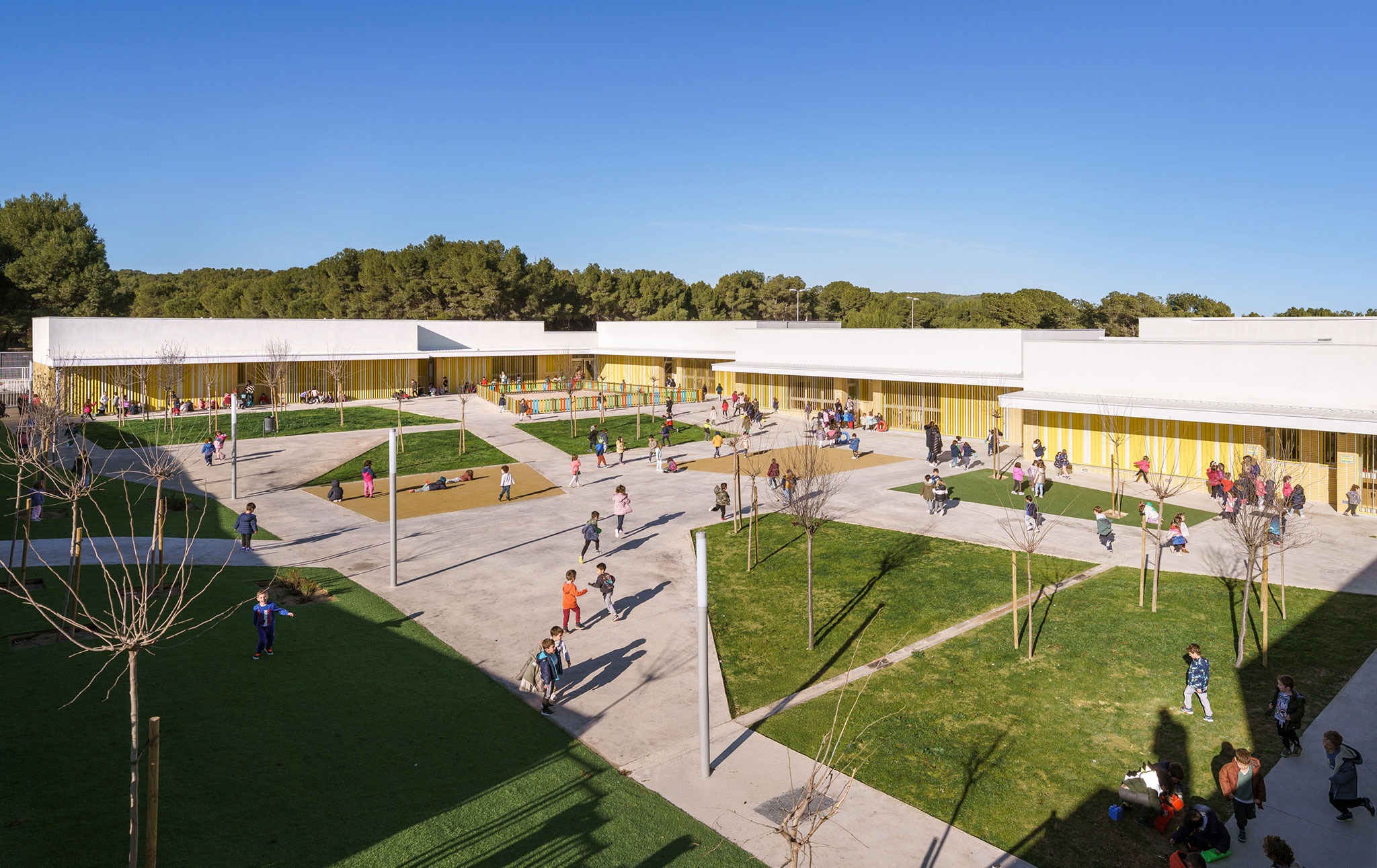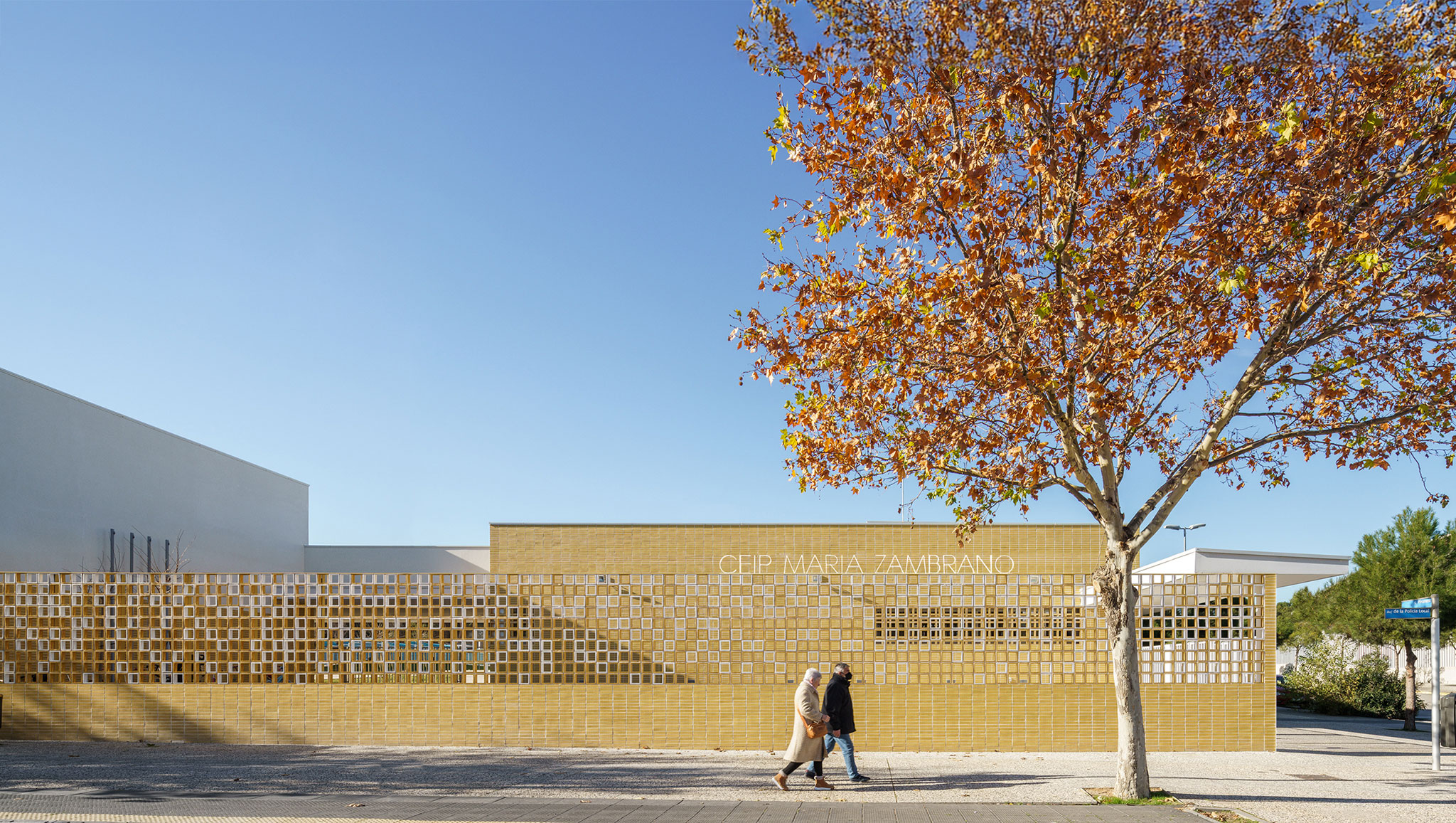
Magén Arquitectos combines different scales in its project, where the fragmentation inside corresponds to the use intended for the youngest children, and where the horizontality of the stepped exterior wall, the lattice and the access porch respond to the public character of the building and the role it plays in the configuration of the city.
The material importance and the contrasting character of the enclosures represent an interesting solution that gives rise to spaces of comfort. It is the fixed lattices, the massive wall smoothed by longitudinal openings and the glazed brick base of the envelope that manage to create a material and luminous game that notably qualifies the learning environment.

Colegio de Educación Infantil y Primaria «Maria Zambrano» por Magén Arquitectos. Fotografía por Rubén P. Bescós.
Project description by Magén Arquitectos
The new Elementary and Primary School is located in the residential neighbourhood of Parque Venecia, southeast of Zaragoza. The heterogeneity of the adjacent buildings, a local police station and a supermarket, the absence of urban references and the peripheral location supported the idea of an introverted project. It also had to be strictly cost-effective, since a large part of the budget was used for foundations, using micropiles given the existing type of terrain.
Supported on the outer alignments, the building forms a continuous wall-fence around the plot towards the outside, which delimits and shelters the school courtyard on three of its sides. In the fourth side, the courtyard opens to the west, towards a pine forest. In contrast to the continuity of the outer wall, the buildings are fragmented volumetrically towards the courtyard, forming a set of pavilions arranged on different levels, following the topography of the plot to minimize the excavations.
The elementary classroom block is divided into two bodies of paired classrooms sharing toilet modules. All of them open onto the garden patio with different play areas. The project combines different scales: while the interior fragmentation corresponds to the classroom module and its use by young children, the continuous horizontality of the exterior stepped wall, the lattice and the access porch respond to a public character. In the primary classroom block, the building is divided into a pair of three-story volumes -staggered between them to fit the topography- and a lower body containing the foyer and the auditorium. The dining and gym volumes complete the stepped profile of the centre.

The frontside and backside idea is present in the different character of the enclosures. Towards the outside, a massive wall torn by longitudinal gaps with fixed lattices, with a glazed brick plinth. In the courtyard, classrooms are opened by generous glass windows, clearly linking the classroom spaces with the outdoor spaces. The importance of natural light as a material that qualifies the learning environment is shown in the designed skylights of children’s classrooms and dining room sections. At the meeting between classroom-corridor heights, a longitudinal skylight opens up facing north, complementing the window to the courtyard towards the south, thus improving the entrance of light and achieving a more uniform distribution in the interiors.
The set of buildings is adapted to the topography of the terrain, with more than a 3 meter difference, by a series of stepped platforms connected by ramps, both outside and inside. In the elementary block, the upwards-staggered section contrasting to the displacement of the pavilions in the floorplan produces the visual effect from the courtyard of maintaining a similar horizontal line in the top of the volumes. As a result of this arrangement, and the gentle slope of the inclined platforms, the perception of the half meter level jumps is diluted in the ground platform. For the topographical adaptation of the primary block, also floorplan-displaced, half a floor is staggered in height following the perimeter of the plot. This level change is resolved by a stepped bleacher, as a chill out area between longitudinal corridors. The same concept is expressed in the elementary block, with small stands between the circulation spaces.




















































